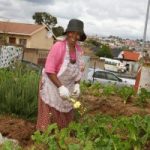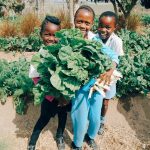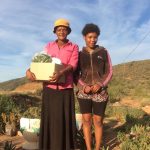Login / Register
Login

Overview
Already pre-pandemic, 27% of children in SA suffered from stunted growth and development from chronic malnutrition, and malnutrition contributed as an underlying factor in at least two-thirds of child deaths in South Africa.
¼ of pregnant women reported going hungry and 25% of households lived below the food poverty line.
For the poorest 40% of the population, there is no nutritional reserve and this economic shock is pushing many over the line into acute malnutrition. This worsening nutrition will increase the number of low birth weight babies, and is increasing susceptibility to infections, firstly to Covid-19 and other childhood illnesses such as diarrhoea and measles. This could result in secondary epidemics, especially if the health services are already overwhelmed by Covid-19.
Now with food prices up by 30% and the economy in a downward spin, it’s become more important than ever to think innovatively and to be efficient in our food relief responses.
We provide disadvantaged communities with covid-19 essential services in all 9 provinces.
Whether the stats indicate that we are reaching “the peak” remains to be seen but what is clear is that things are going to get a lot worse before they get better.
What is also clear is that with many households losing their sources of income as a result of the pandemic and its associated lockdown, our country is at the cusp of a malnutrition crisis.

GOOD FOOD NETWORK
Welcome to South Africa’s organic, local, fair, ethical food directory, marketplace, and fundraising platform.
Be a food super-hero with every bite. Together we can reinvent the food system!
SECURE PAYMENT METHODS






